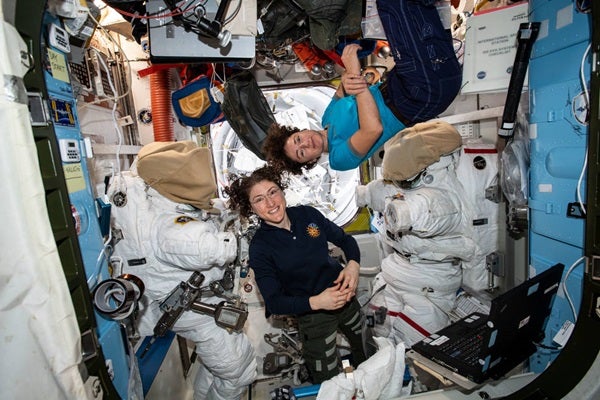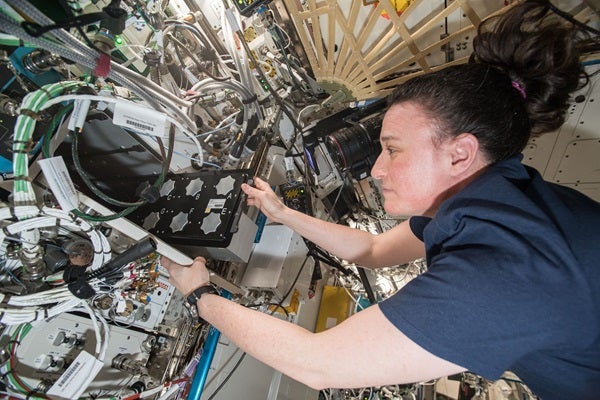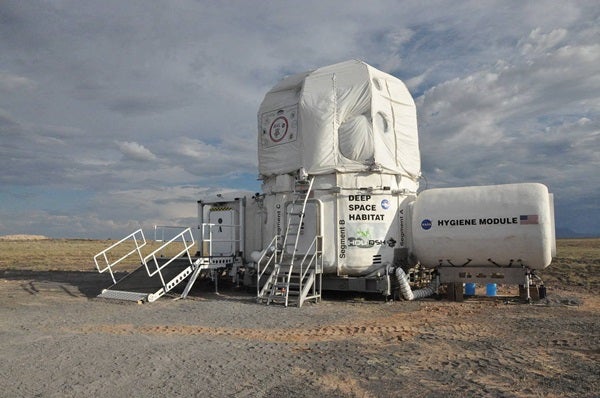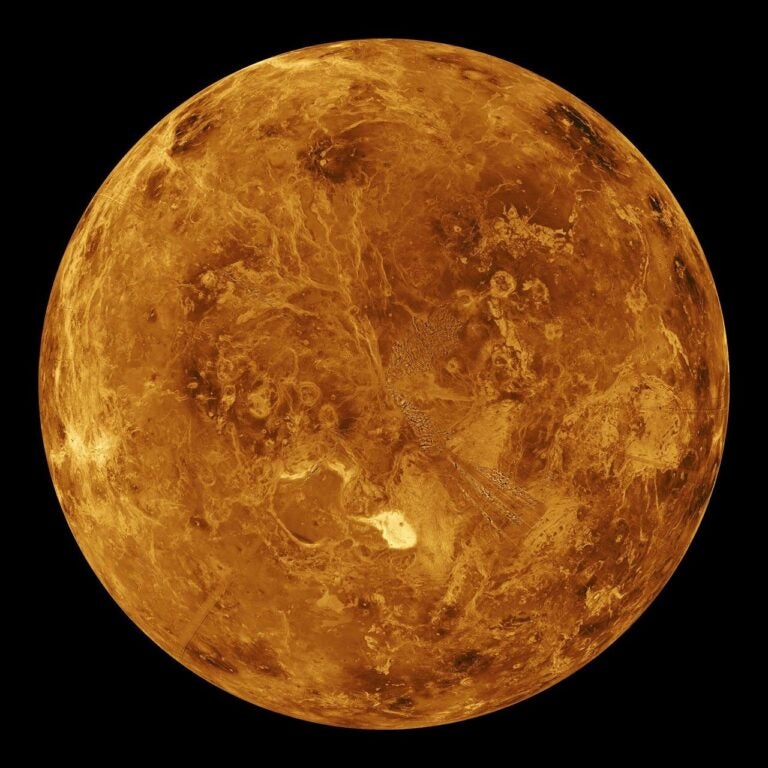The plan so far: land the next humans on the Moon by 2024. And, if all goes well, use Earth’s satellite as a springboard to prepare to venture further — to Mars.
Before that happens, though, we will need some answers about the impact on human health of exploring deep space.
“We don’t really know what happens to the human body for an extended period of time [in] deep-space exploration,” says Kristin Fabre, assistant professor at the Center for Space Medicine, Baylor College of Medicine in Houston, and senior scientist at the Translational Research Institute for Space Health (TRISH). That’s because data from historic lunar missions are limited to only a few days at a time, whereas a trip to Mars would take months. And the International Space Station (ISS), where humans do regularly spend months in space, lies within Earth’s magnetosphere, which limits the amount and type of exposure to deep-space radiation.
To study the effects on human biology in space, researchers use analogs and simulators on Earth to replicate space conditions. TRISH, for example, is working on a Mars mission simulator to study the physiological effects of prolonged space travel on the human body. And while not a perfect analog, NASA’s Human Research Program currently observes ISS crew to learn how the body adapts to living space longer periods of time.
Situated in low Earth orbit (LEO), the ISS is an invaluable research setting because the conditions there still cause fundamental changes in biological systems compared to those on Earth’s surface. NASA’s famous Twins Study tracked biological and mental changes of two identical twin brothers as one orbited in space (Scott) and the other remained firmly on Earth (Mark). The study’s purpose was to determine the effect of spaceflight hazards on the human body. Although numerous changes were cataloged, researchers did note that following Scott’s return to Earth, several of those changes disappeared. Some, however, remained even after six months, including DNA damage from chromosomal inversions, shortened telomeres (which are linked to aging), and attenuated cognitive function.
Speeding up stem cells
Another avenue for answers lies in stem cell research at the ISS. Stem cells are cells with the potential to develop into any kind of cell within the body. The Integrated Space Stem Cell Orbital Research (ISSCOR) Laboratory, a unique collaboration of industry and academia between the University of California San Diego (UCSD) and the aerospace engineering company Space Tango, is a first-of-its-kind, dedicated stem cell research lab in space. “We’ve been talking about exploring Mars, but we don’t really understand … how human tissues or human cells will behave in this kind of environment,” says Alysson Muotri of UCSD’s School of Medicine. This is the gap that the ISSCOR project is hoping to fill.
The combination of microgravity and the increased ionizing radiation on the ISS causes stem cells to mature faster — meaning scientists can observe how they divide and age without having to wait years. The UCSD has three inaugural experiments heading to the ISSCOR lab, involving blood, brain and liver stem cells. They are expected to shed light on how aging and long-onset degenerative diseases, like cancers, neurological disorders, and liver disease, develop in humans.
But disorders like Alzheimer’s or dementia take several years to appear in the human brain, Muotri says. “Even the organoid models,” which are simplistic versions of larger organs, created from stem cells, “[cannot be kept] alive for 60, 70 years,” assuming researchers had the luxury of time to study them that long. Instead, by artificially aging stem cells on the space station, he says, researchers might be able to better understand the cellular stresses and defects that lead to degenerative disease. By understanding how microgravity speeds up maturation, he concludes, we can understand the effects it might have in the brain of astronauts.
Moving out
While LEO affords a great opportunity to study humans in space, it doesn’t answer the question of what happens in deep space. The ISS is about 250 miles (400 kilometers) from Earth’s surface, whereas the Moon is about 240,000 miles (386,000 km) away and Mars an average of 140 million miles (225 million km) from Earth.
Once beyond Earth’s magnetosphere, astronauts in deep space will be exposed to galactic cosmic radiation. “That’s a unique type of radiation we need to think about and what type of damage that would do to tissues,” Fabre says, “whether it be during the mission or long-term effects.”
As humans venture farther from Earth, she continues, we will also need to address how that distance will impact stress levels and mood. “How do we stay engaged in our activities and our workloads so that we have optimal cognitive abilities?” she asks.
NASA notes that a confined environment and elevated levels of stress hormones lead to a weakened immune system. This, Fabre says, leads in turn to metabolism issues: “The microbiome [also] plays a big role in our metabolism. How we break down nutrients and the type of nutrients or the type of molecules that we get from our microbiome impacts the rest of our tissue or physiological function.”
Then there is the changing gravitational landscape: Astronauts would go from Earth’s gravity to weightlessness on each three-month trip to and from Mars, then switch to Mars’ gravitational tug, which is about one-third of Earth’s. Anyone who returns to Earth would experience the situation in reverse. These transitions will certainly take a toll on the body, including issues with coordination, orientation, and even movement. This is also why some people experience motion sickness in space.
Fortunately, there are several analogs available on Earth to study the effects of these hazards. NASA’s Human Exploration Research Analog, or HERA, at the Johnson Space Center, is a three-story habitat used to simulate the isolation and close quarters that might be experienced by future long-term space explorers. Researchers also turn to studies of people who spend time working in Antarctica to examine the effects of isolation.
The NASA Space Radiation Laboratory in Brookhaven, New York, conducts studies on the effects of radiation on living tissues. “[The lab] can simulate, to some extent, some of the galactic cosmic radiation particles that we would be exposed to,” Fabre says, “[so] that we can start to understand some of the damage unique to these types of radiation.”
TRISH is using advanced tools called complex in vitro models (CIVMs) to understand how tissues fare in the presence of cosmic radiation. CIVMs include artificially engineered 3D cell cultures, organs-on-chips, and bioprinted tissues, which are analogous to anatomical and physiological aspects of human biology. In the long term, TRISH plans to send diverse cell samples on the Moon to model a broad range of human traits, such as sex, gender, and ethnicity. The idea, Fabre says, “is to understand what is it that [an individual] might be more susceptible to … so in the event that [a] medical event would happen, you have the right interventions to take so you can complete your mission and still maintain health and mental performance.”
After all, millions of miles from Earth, going back home for a sick day is not an option.












